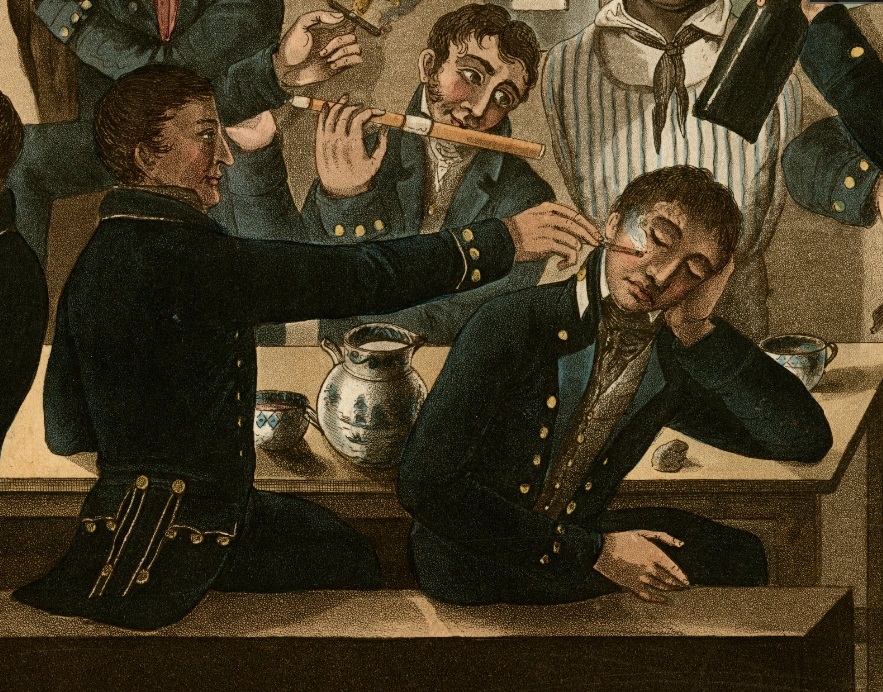Dia dos bobos, Ngày Cá tháng Tư, Balandžio pirmoji, April Fools’ Day. Call it what you want, the first of April has long been a day for tricks, jokes, and hijinks.
While most sailors’ memoirs and narratives are silent about the observance of April 1st, most of them include some mention of the pranks perpetrated on unsuspecting or gullible shipmates. Sailors generally enjoyed a reputation as being a light-hearted, merry set of men. Nevertheless, many of their jokes could be quite malicious. Slicing the tails from the coat of a newly-enlisted landsman, or cutting down a man’s hammock in the night, while endlessly amusing for the perpetrators, surely gave the victim some sore knocks.


“[The crew] were all ways merry and lively and the officers liked to see them so, the officers would pipe all hands to mischief when we had a leisure afternoon, this was to encourage them. At one time in Boston harbor we were at this sport when a green looking countryman came alongside the ship in a shore boat to look at the ship and having the whip on the main yard to whip in water [casks] one of the larks went down in the boat and commenced talking with the man while another slipped the rope under his arms no sooner done than up he went crying ‘a Turkey a Turkey,’ this was sport for the officers. They lowered him down on deck and showed him the Ship he was a man over six foot high with broad brim hat, a long surtout [an overcoat] and cane and cut a great figure in the air.”1
“Our progress was slow, till this evening, when. the wind became fair, at last: this, with a bright moon and milder air, has brought a fiddler or two to the forecastle, where the sailors form many a merry group; but their ball room is a singular one: the floor is dancing too, and sometimes kicks up the heels of all, or sends them, head foremost, among the spars. Some are making strange noises or playing tricks, and all are in a frolicksome mood. Full license is given to it from the quarter deck, as is often done when the ship is under easy sail; and I have heard of some of our ships, where they even pipe all hands to mischief. The scene of wild riot, and rude joke, and antic merriment, is described as very amusing. But it is not often done, and is inconsistent with the sober and stern character of the service.”
1 Thomas C. Byron’s Narrative of the Cruises of the U.S. Frigate Constitution, 1861. USS Constitution Museum Collection. Craig C. Campbell Gift.
The Author(s)
Matthew Brenckle
Research Historian, USS Constitution Museum
Matthew Brenckle was the Research Historian at the USS Constitution Museum from 2006 to 2016.